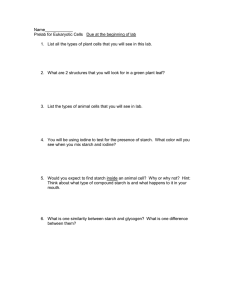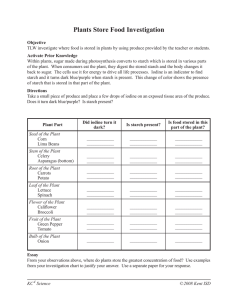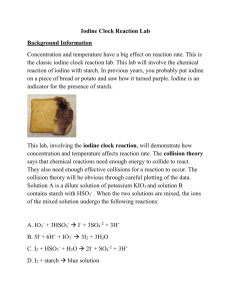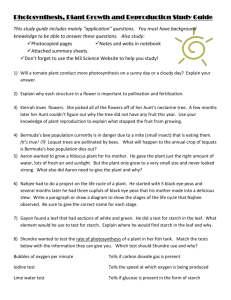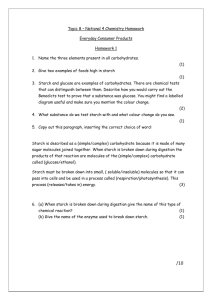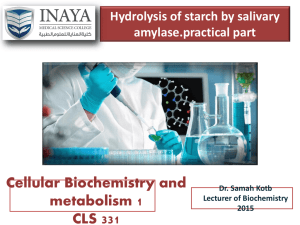The Clock Reaction
advertisement
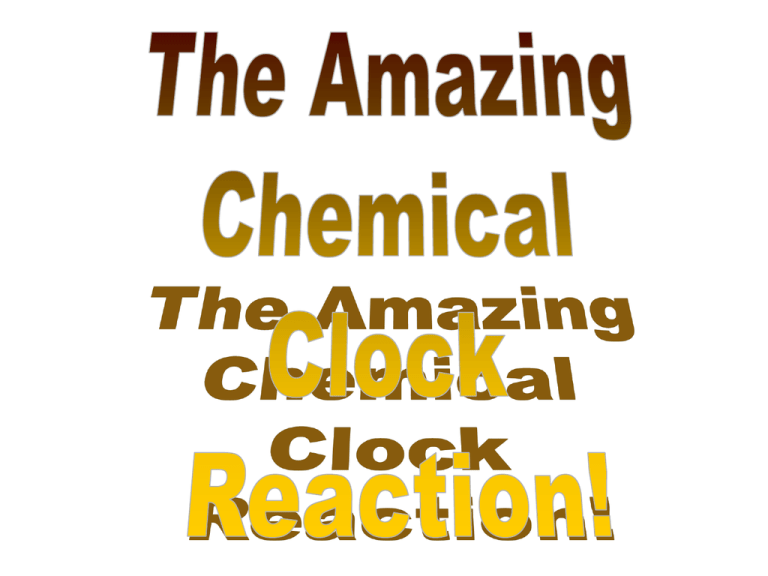
Click on slide to start movie; here to stop. Mix equal volumes of A and B by pouring back and forth into beakers three times. The reaction starts on the lst pour and ENDs when the solution turns black….therefore the name CLOCK REACTION…it tells you how long the reaction takes from start to finish! Click on slide to start movie; here to stop. What would happen if we did the same reaction but didn’t use any starch. Starch turns iodine black. 1. What about iodine…what does it look like? What if you dissolve some in water? 2. Where can you get starch? 3. What happens when iodine comes in contact with starch? Know what do you expect to happen IF the two solutions A and B in the clock reaction don’t have any starch in them? 1. Will a reaction still happen? 2. Will the result be black? 3. What will the result look like? Click on slide to start movie; border to stop What would happen to the time for the reaction if we diluted one of the reactants? What would happen to the time for the reaction if we heated one or both solutions? Solutions for the iodine clock reaction: A. 4.3 g KIO3 per liter B. 0.2 g Na2S2O3, 4 g soluble starch and 5 ml concentrated sulfuric acid. You can slow the reaction down by diluting A and speed it up by adding more sulfuric acid to B. You can use cornstarch, put 1 tsp in 200 ml water and heat to boil in microwave….let cool and add to B. You can use a big pinch of A, small pinch of B throw in a little sulfuric acid in B and some starch. Then adjust to suit you…. The Reaction Mix no 1 click 2 3 Any HSO4left? 4 yes 1. IO3- + 3HS03- I- +3SO4-2 + 3H+ - + 6H++IO35 I 3 I2 (aq) + 3H20 2. 3. I2 +HSO3- + H2O 2I- + SO4-2 + 3 H+ 4. I2 + starch == blue solution I2 solution appears yellowish without starch.
